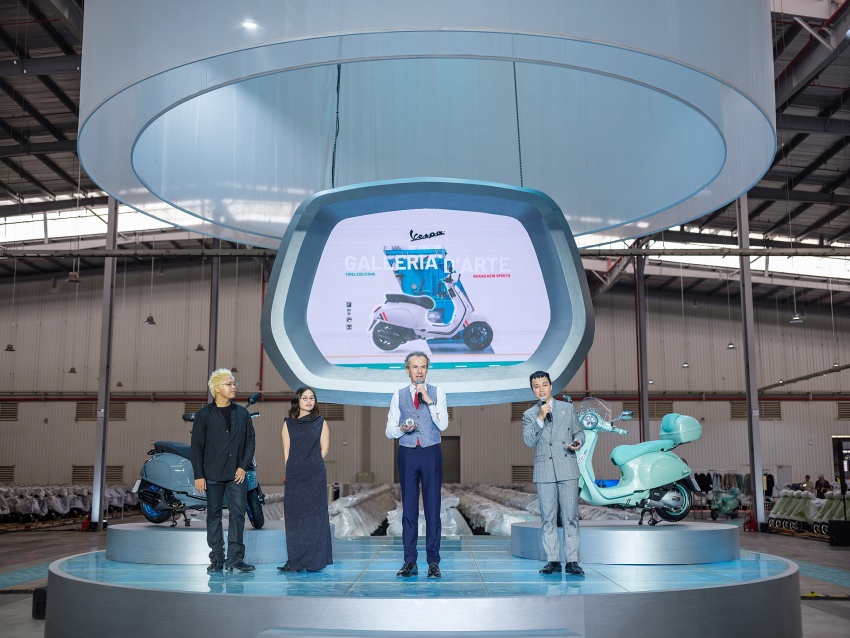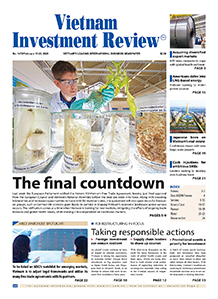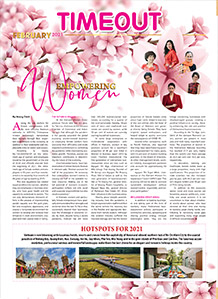Piaggio Vietnam unveils its new 'made-in-Vietnam' Vespa models
 |
On May 15, Piaggio Vietnam welcomed guests and media to its Vinh Phuc factory. The occasion was the unveiling of the 2025 Vespa Primavera and Vespa Sprint, two models not only built in Vietnam, but built with Vietnamese hands and spirit. The space, named 'Galleria d’Arte', resembled a design exhibition more than a showroom. From handcrafted displays to intimate storytelling walls, the event captured the essence of Vespa’s identity, including timeless, personal, and artistic.
But the most moving moment came when Gianluca Fiume, president of Piaggio Asia-Pacific cum general director of Piaggio Vietnam, said, "Even after 17 years working with this brand, it’s difficult to fully describe what Vespa means. The Vespa brand is not just a product. It’s a feeling, a statement of freedom, and for many, a partner in life."
Fiume’s voice trembled slightly when he recalled how Vespa scooters first appeared in Vietnam in 1954, brought by the French. "Back then, it was about more than just getting around. It was about showing who you are. The streets of old Saigon were alive with the sound of two-stroke engines and the sight of impeccably dressed men and women riding in style."
"That spirit," he said, "still lives on today."
It wasn’t until 2007, however, that Vespa officially began its manufacturing journey in Vietnam. The Piaggio Group made a bold decision to build its first two-wheeler production plant and research and development (R&D) centre in Asia right in Vinh Phuc. By 2009, the first 'Made in Vietnam' Vespa LX rolled off the line. The moment marked not just a milestone, but a promise – that Vespa in Vietnam would be more than an import; it would be a homegrown symbol of design and innovation.
In 2010, Piaggio designated Vietnam as its Asia-Pacific headquarters. In 2015, the factory celebrated its 500,000th unit. Every scooter made in Vinh Phuc is the result of meticulous craftsmanship and human passion. From aerospace-inspired welded frames to eco-friendly four-layer paint finishes, from engine tuning tailored for Asian cities to final inspections by expert eyes, Vespa Vietnam’s output is the fusion of Italian heritage and Vietnamese pride.
"This is where our heart beats loudest," Fiume said. "Not only because it’s a factory, but because it holds our aspirations."
 |
In this emotionally charged setting, Vespa unveiled its newest creations: the Primavera 2025 and Sprint 2025. These two models, icons in their own right, have been reimagined for a new generation of riders who seek individuality, aesthetics, and meaning in motion.
The Primavera 2025 revives tone-on-tone design, a signature Vespa element from the 1940s and 50s. Every component – from the frame to the seat to the rims – is bathed in a single harmonious hue, available in sophisticated colourways such as 'White Innocente', 'Red Scarlatto', and 'Green Amabile'. Chrome accents and fine stitching elevate the elegance, making it a statement piece on every street.
The Sprint 2025, in contrast, exudes dynamism. It plays with contrast – matte finishes against gloss, dark details against bold base colours like 'Yellow Curioso' and 'Grey Intrepido'. A limited-edition Sprint S, capped at just 100 units for Vietnam, offers a customisation kit in striking shades of 'Fluo Red' or 'Vivid Blue', transforming each unit into a canvas of personal expression.
Technologically, both models reflect Vespa’s ongoing investment in innovation. Features include a new 3-inch analog-LCD dashboard, full LED lighting, and the Vespa MIA system that allows riders to sync their smartphones for calls, messages, and music. Advanced safety is also integrated, with Roll Over Sensors and Emergency Engine Kill switches – functions typically reserved for larger, premium motorcycles.
Despite their rich features, these scooters remain light on consumption. With fuel efficiency as low as 2.4L/100km, and an extended maintenance cycle of up to 30,000km, Vespa continues to balance beauty with practicality.
"We always design with people in mind," Fiume said. "The future of Vespa lies in connecting emotionally, whether it’s with our long-time riders or the new generation discovering us for the first time."
For Piaggio, the journey is far from over. With Vietnam as both its production base and strategic hub for the Asia-Pacific, the company aims to go beyond mobility. It envisions Vespa as a lifestyle brand, one that inspires confidence, creativity, and connection.
"The Vespa community in Vietnam is growing not just in numbers, but in spirit," said Fiume. "We will continue to innovate, to listen, and to inspire. Our goal is to bring people closer to each other, to themselves, and to the joy of beautiful motion."
From the hand of an Italian engineer in 1946, to the hands of skilled Vietnamese workers in 2025, Vespa has travelled far. But wherever it goes next, one thing remains certain, it will carry not just people, but emotions.
Piaggio’s factory in Vinh Phuc currently serves as the group’s Asia-Pacific headquarters and plays a strategic role in the company’s global operations. With a skilled workforce of over 1,000 employees, the facility comprises a large-scale vehicle assembly complex, a state-of-the-art engine manufacturing plant, and Piaggio’s only R&D centre in Southeast Asia.
Throughout its development journey, the Vinh Phuc factory has produced a wide range of two-wheelers, from mainstream and core models to premium lines, including the iconic Vespa LX, the sporty Aprilia SR GT, and the high-end Vespa GTS.
What the stars mean:
★ Poor ★ ★ Promising ★★★ Good ★★★★ Very good ★★★★★ Exceptional
Related Contents
Latest News
More News
- Climate Finance Accelerator Vietnam begins search for projects seeking investment (December 18, 2025 | 17:22)
- Vietnam and Switzerland conclude SwissTrade (December 17, 2025 | 18:22)
- TECHFEST Vietnam 2025 links startups with policy and capital (December 15, 2025 | 18:21)
- MST to allocate $3.8 billion for sci-tech in 2026 (December 15, 2025 | 18:10)
- Long Thanh International Airport welcomes first Vietnam Airlines test flight (December 15, 2025 | 18:01)
- Health Innovation Hub: accelerating health equity through digital healthcare innovation (December 15, 2025 | 08:00)
- Vietnam’s first AI Law to take effect from March 2026 (December 12, 2025 | 09:00)
- Chi Communications joins SEA CAN alliance (December 11, 2025 | 17:39)
- New Law on High Technology sets incentives and safeguards (December 11, 2025 | 09:00)
- IBTE 2025 to return to Ho Chi Minh City this December (December 11, 2025 | 09:00)

 Tag:
Tag:




















 Mobile Version
Mobile Version